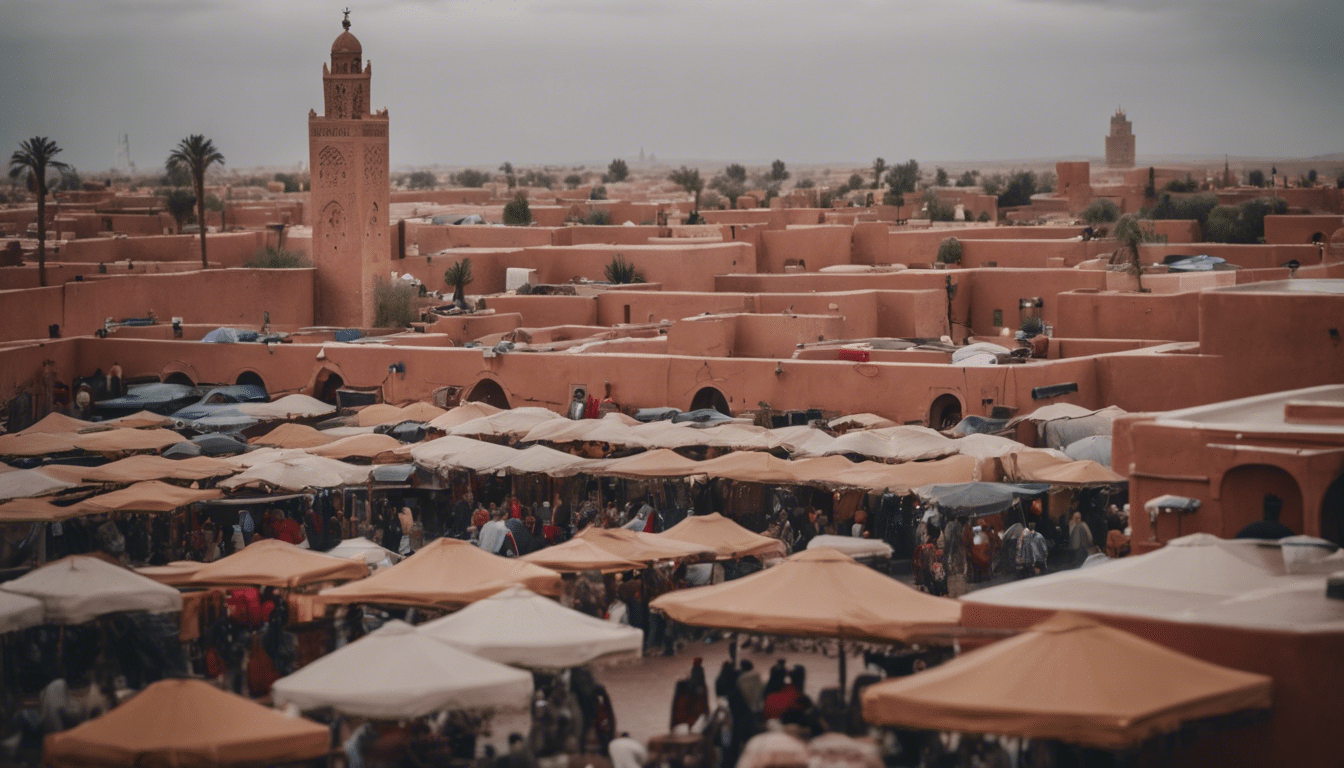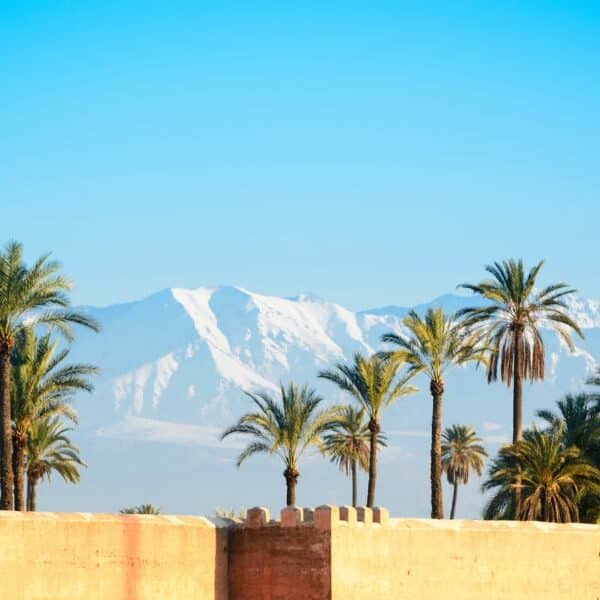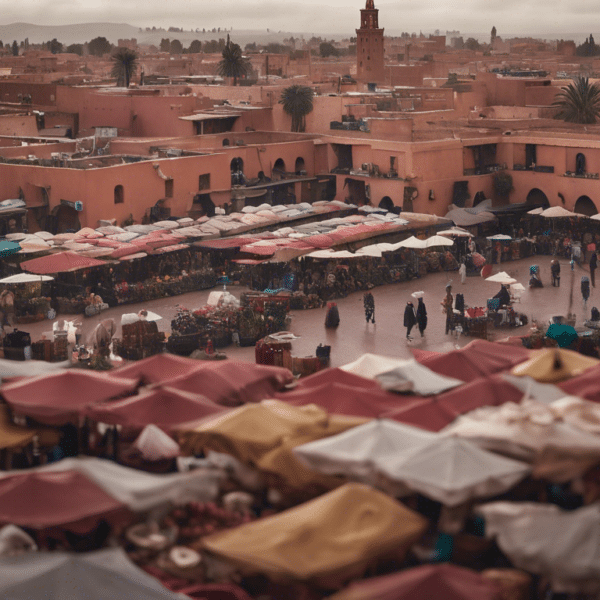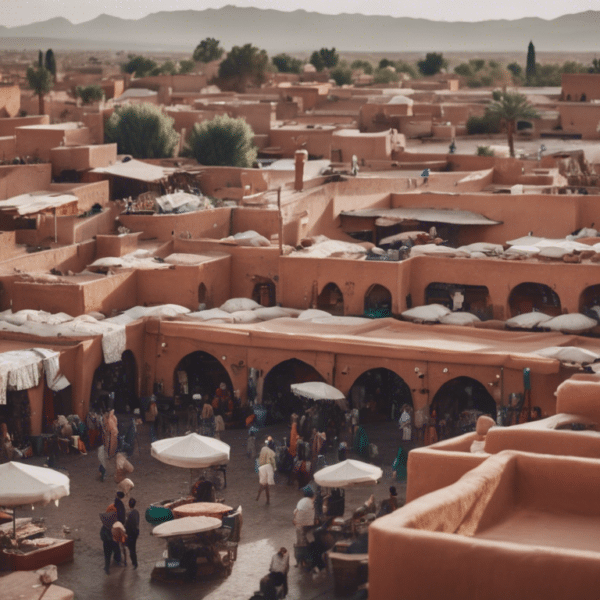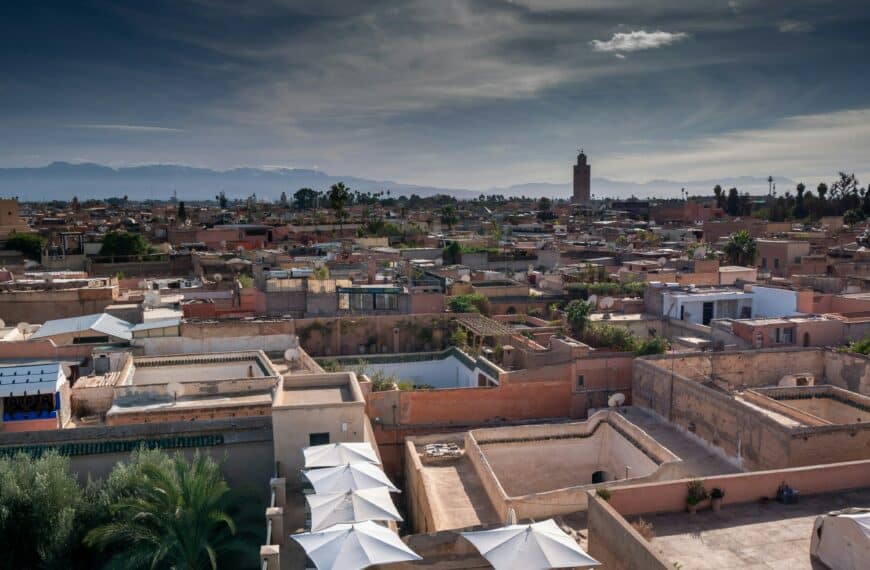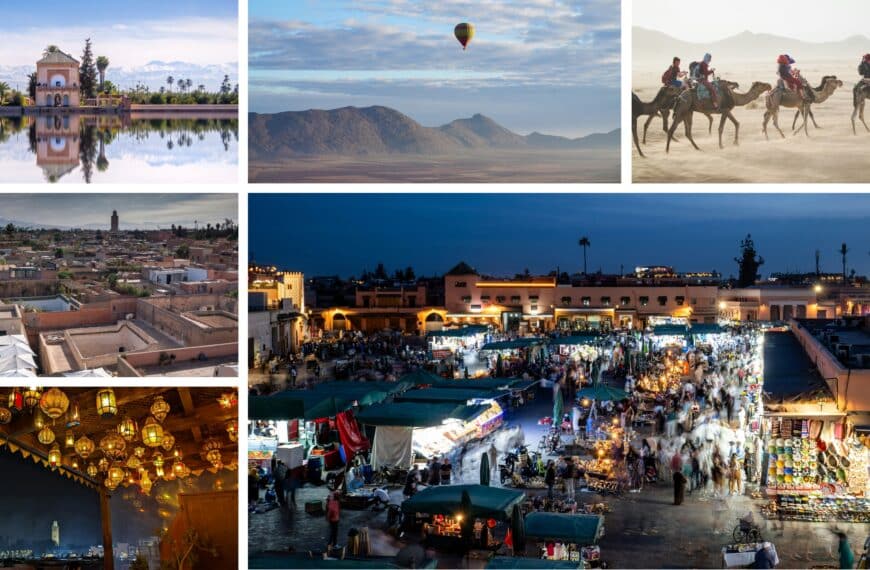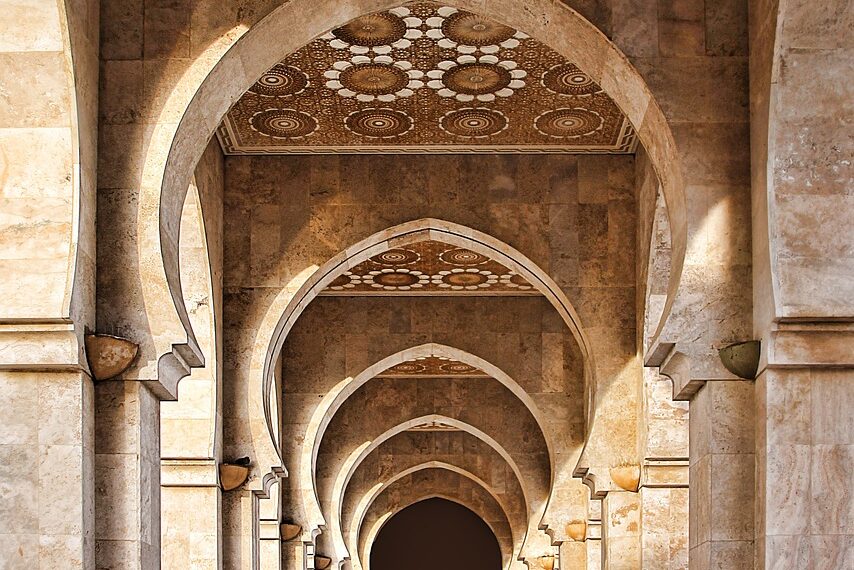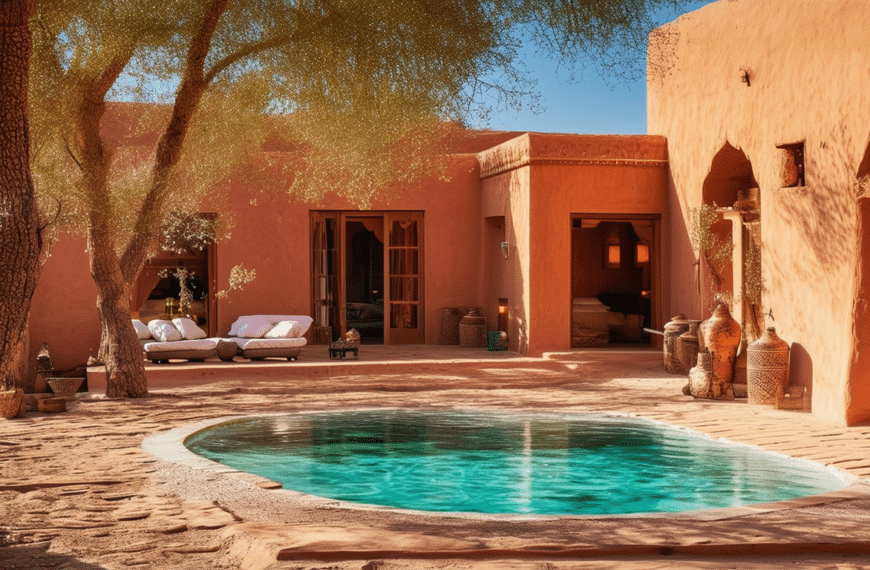The Geographic Position and its Impact on Marrakech’s Weather
The Geographic Position of Marrakech
Marrakech, the Jewel of the South, is situated in the kingdom of Morocco. It occupies a prime position just south of the foothills of the snow-capped Atlas Mountains. Its unique geographic position contributes to its exceptional climate, often referred to as a semi-arid climate.
Located in North Africa, at the convergence of different geographies – the sea, the desert, and the mountains – Marrakech’s weather is also greatly impacted by its proximity to the Sahara desert, which is to the south and east of the city.
Marrakech’s Unique Climate
The geographical position of Marrakech gives it an extraordinary contrast of seasons. The semi-arid climate results in virtually rainless summers and surprisingly damp winters. With the Atlas Mountains acting as a natural barrier, Marrakech is shielded from the Sahara’s heat and the coastal city’s humidity, giving it its own unique microclimate.
Seasonal changes in Marrakech are quite stark. Summers can be incredibly hot with temperatures soaring above 40 degrees Celsius, while winters remain mild during the day but can see a significant drop in temperature at night, sometimes falling down to around 8 degrees Celsius.
Impact on Travel Experience
The geographic position of Marrakech and its unusual climate directly impacts travellers’ experiences. Despite the intense heat in the summer, the city remains lively with festivities like the Marrakech Popular Arts Festival. For those seeking a more comfortable travel experience, spring and autumn are the ideal periods to fully enjoy the the ochre city – with mild temperatures and relatively low rainfall, these seasons allow for comfortable exploration and a wide range of outdoor activities.
Furthermore, the climate of Marrakech in winter can be perfect for those escaping from harsher winters in their home countries. The mild daytime temperatures allow for continued exploration, while the cooler nights deliver a refreshing change.
Various Effects of Marrakech’s Geographic Position
Marrakech’s unique geographical location does more than just create an interesting weather pattern. It is also responsible for the city’s rich biodiversity. The semi-arid climate has given rise to a unique vegetation composed mainly of olive, palm and cypress trees.
In conclusion, by understanding how the geographic position of Marrakech impacts its weather, travellers can plan their trips most effectively, and immerse themselves in the rich culture and diversity that this magical city has to offer.
How the Sahara Desert Influences the Climate in Marrakech

The Impact of Sahara Desert on Marrakech Weather
The vibrant city of Marrakech offers an enchanting weather spectacle, courtesy of its geographical setting— being nestled between the contrasting realms of the Sahara Desert and the Atlas Mountains. Rooted in the desert’s edge, this city experiences a climatic influence that is as spectacular as the mustard dunes of Sahara itself.
Due to its geographical peculiarity, the city retains the semi-arid climate significantly impacted by the Sahara desert’s vast expanse. The desert plays a dual role, acting as a thermostat and stabiliser – heating the air during the day while keeping it cool at night.
Understanding the Unique Climate of Marrakech
In essence, the Sahara desert’s proximity gives Marrakech two distinguished weather characteristics – warmth and dryness. Most days the city is soaked in brilliant sunlight, gifting it an annual sunshine rating that outperforms most European cities. Winter months, despite the impression of frosty weather, are mild and pleasantly warm during the day. The average temperature rarely plunges below 12°C.
At the onset of the summer months, between June to September, the mercury commonly spikes up to 38°C in the shade. The city owes this intense summer heat to the Sahara Desert’s arid influence. While the nights cool down reasonably due to desert properties, it is advisable for visitors to stay away during the peak summer months if they are not accustomed to such severe heat.
Desert Influence on Winds and Rainfall
The Sahara influences more than just the temperature; it impacts the winds and rainfall too. The easterly and southerly winds, often known as the desert winds, carry the desert’s heat and minimal moisture to the city of Marrakech. While the city does experience sporadic rainfall, the desert’s presence contributes to its scantiness.
The desert winds dominate particularly from late Spring to early Autumn, creating periods of dry, warm weather. Though rare, these winds can occasionally whip up a dramatic spectacle of dust storms, tinting the city’s sky with a surreal ochre tint.
Marrakech Weather: A Balance of Extremes
Overall, Marrakech experiences a fascinating weather balance, courtesy of the bordering Sahara Desert and Atlas Mountains – each bringing their unique climatic influences. The charm of Marrakech’s weather lies in its unpredictability and variation because of the Sahara desert. The desert enables Marrakech to enjoy an extended summer, providing ample opportunities for travellers to experience the city’s allure at any given time of the year.
Shadowed by the Sahara and blessed with an enriching cultural tapestry, the ‘Ochre City’ is, indeed, a traveller’s delight, offering distinctive weather conditions and experiences shaped by the world’s most extensive hot desert.
The Role of the Atlas Mountains in Shaping Marrakech’s Weather
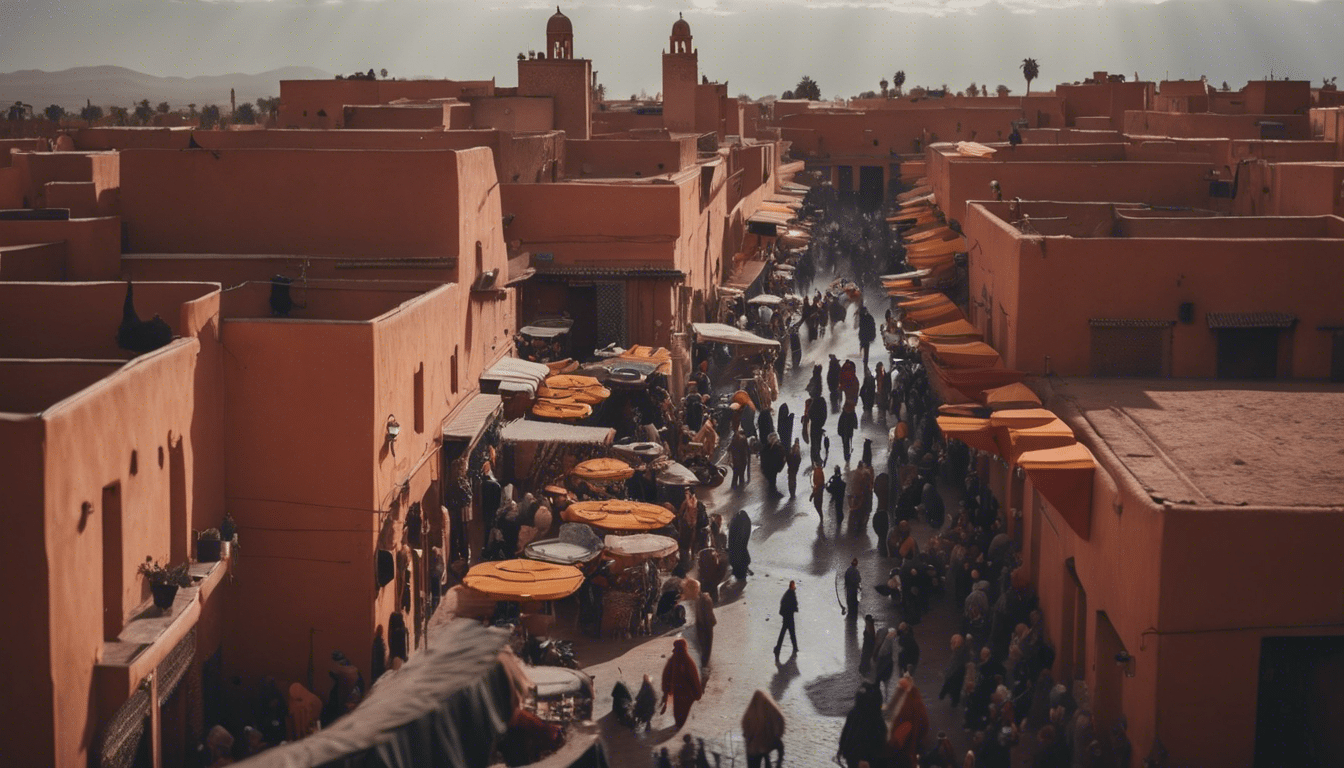
Unveiling the Magic of Marrakech Weather
Far from being ordinary, the weather in Marrakech is an essential facet that significantly contributes to the city’s unique charm. Nestled at the foot of the Atlas Mountains, the ochre city boasts an extraordinary climate, generously shaped by its privileged geographical position.
The Intriguing Influence of the Atlas Mountains on Marrakech’s Weather
Intricately intertwined with the patterns of Marrakech’s weather, the Atlas Mountains play a pivotal role in the city’s meteorological dance. These majestic peaks act as a significant barrier, separating the moisture-dominated coastal regions from the arid interior lands of Marrakech. Consequently, they capture the moisture carried by the Atlantic winds, releasing it as rainfall on their western slopes. This mechanism therefore creates a rain shadow effect on the eastern side, present-day Marrakech, leading to a semiarid climate characterized by mild, wet winters and scorching, dry summers.
Decoding the Weather Patterns: Seasonal Variations
It is an art in itself to decipher the complexities of the Marrakech weather. The city sees a great historical diversity in its weather patterns, all thanks to the Atlas Mountains’ mighty influence. Winter months, stretching from November to February, offer a mild climate with temperature averages between 20-22°C during daytime. A sporadic rainfall under clear blue skies further enriches the season, granting the landscapes a unique allure. Meanwhile, the summers showcase an entirely different picture. This season, lasting from June to August, is distinguished by its blistering heat, with temperatures often soaring beyond 40°C.
The Weather’s Impact on Marrakech’s Charm
Marrakech’s weather certainly holds a prestigious rank in shaping the city’s enchantment. The fluctuating weather and minimal rain give way to an incredible diversity in the city’s flora, manifesting in lush gardens and parks. The clear summer nights under the star-studded sky, or the fresh and slightly humid winter mornings, all add up to concoct a recipe for an extraordinary travel experience, guided by the weather’s whims.
Making the Most of Marrakech’s Weather
Blessed with a consistent climate, Marrakech extends its open arms to travellers year-round. Thanks to the Atlas Mountain’s protective barrier, the precipitation tends to be minimal. Therefore, outdoor activities can be enjoyed without weather-related disruptions. Remember, it’s essential to check the weather forecast diligently to plan and pack accordingly.
Despite its unpredictability, the weather in Marrakech invites both layers of fascination and a traveler’s curiosity, promising a memorable rendezvous at every visit. Shaped by the mighty Atlas Mountains, the Marrakech weather indeed stands as a testament to nature’s incredible power to craft a uniquely atmospheric oasis.

